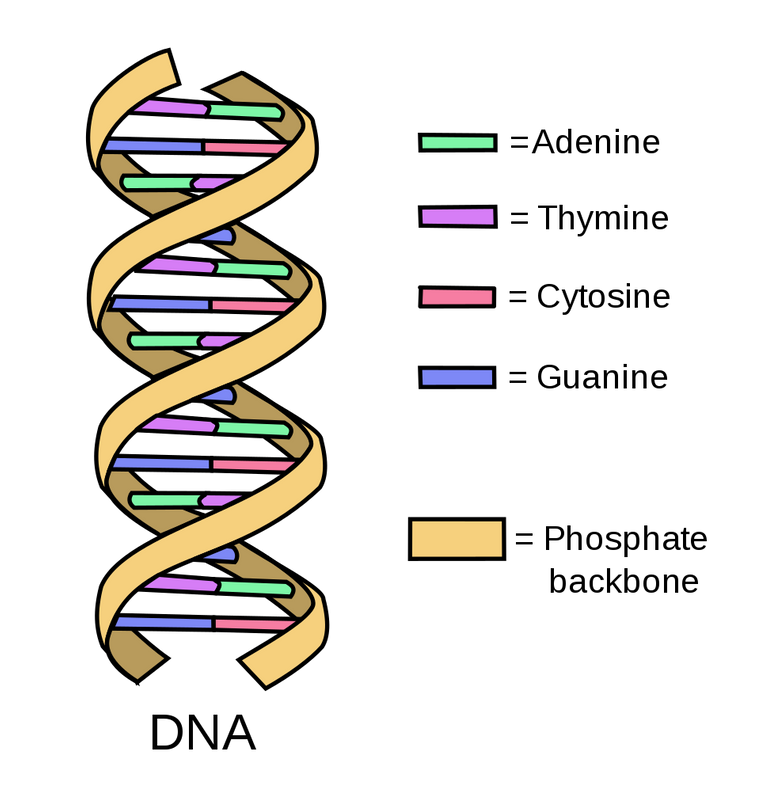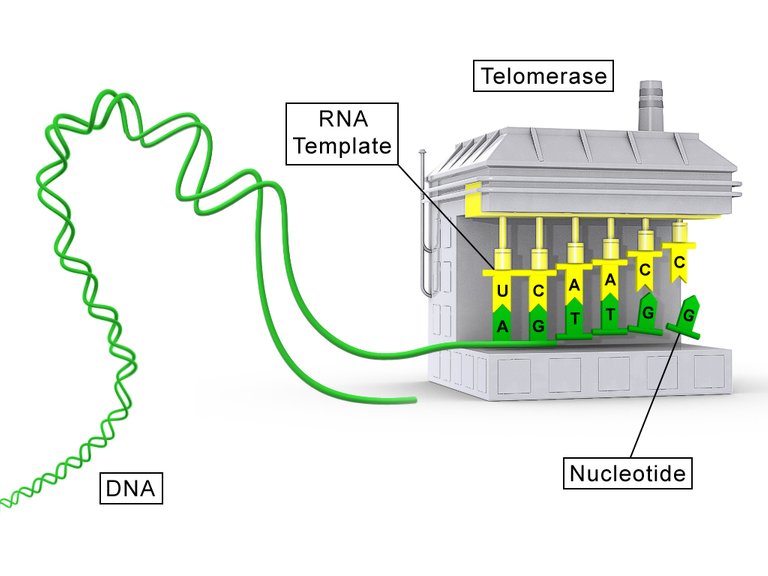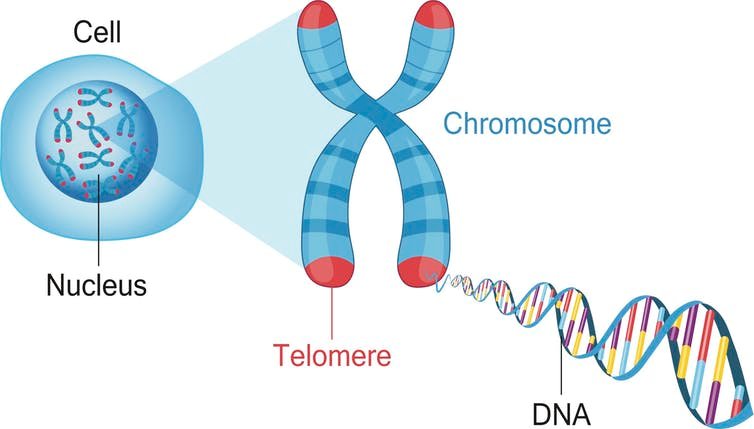DNA is perhaps the best-known biological molecule; It is present in all forms of life on Earth. But what is DNA (Deoxyribonucleic acid)?
Virtually every cell in your body has a DNA or genetic code that makes you. DNA provides instructions for the development, reproduction and functioning of all life.
The difference in genetic code is only because a person has blue eyes instead of brown eyes, some people are susceptible to certain diseases, birds have only two wings, and giraffes have long necks.

Source
Surprisingly, if all the DNA of the human body is uncovered, it will return to the sun more than 300 times.
DNA or deoxyribonucleic acid is a long molecule that contains our unique genetic code. Like a recipe book, it contains instructions for making all the proteins in our body.
DNA is a complex molecule that contains all the information needed to build and maintain an organism. All living things have DNA within their cells. In fact, almost every cell in a multicellular organism has a complete set of DNA required for that organism.
In short, DNA is a long molecule that has a unique genetic code of each individual. It provides instructions for the manufacture of proteins that are necessary for our body to function.
DNA instructions are passed from parent to child, of which approximately half of the DNA is passed from the father and half from the mother.

Source
A DNA is two standard molecules that appear twisted, giving a unique shape called double helix.
Each of the two strands is a long sequence of nucleotides or individual units:
Phosphate molecule
A sugar molecule, called deoxyribose, which contains five carbons
A nitrogenous area
There are four types of nitrogen-rich areas called bases:
adenine (A)
cytosine (C)
guanine (G)
thymine (T)
The sequence of these four bases forms the genetic code, which is our instruction for life.

Source
The two strands of DNA are stuck together to form a ladder-like shape. Within the ladder, A always clings to T, and G always clings to C to form "Rungs". The length of the ladder is formed by the sugar and phosphate groups.
Packaging DNA: Chromatin and Chromosomes
In the cell nucleus, DNA is organized into coiled fibers called chromosomes.
Most DNA resides in the nuclei of cells and some are found in mitochondria, which are the powerhouses of cells.
Because we have so much DNA (2 meters in each cell) and our nuclei are so small, DNA is packed in a very systematic way.
The filaments of DNA are looped, coiled, and wrapped around proteins called histones. In this coiled state, it is called chromatin.
Chromatin is further condensed through a process called supercoiling, and is then packed into structures called chromosomes (chromosomes). These chromosomes form the familiar "X" shape as shown in the image above.
Each chromosome contains a DNA molecule. A human has 23 pairs of total chromosomes or a total of 46 chromosomes. Interestingly, fruit flies have 8 chromosomes, and pigeons have 80.
Chromosome 1 is the largest and contains approximately 8,000 genes. The shortest chromosome is 21 with approximately 3,000 genes.
Half of these chromosomes inherit from the mother and half inherit from the father to the next generation. As humans, therefore, we have 23 chromosomes from each parent.
This explains why organisms can share characteristics from both parents. A child, for example, may have red hair like their dad and long fingers like their mummy.
What is a gene?
Each length of DNA that codes for a specific protein is called a gene.
Genes are hereditary material that is located within the cell nucleus. Genes, which are made up of DNA, act as a directive for making molecules called proteins.
For example, a gene codes for protein insulin, a hormone that helps regulate blood sugar levels. Humans have around 20,000–30,000 genes, although estimates vary.
Our genes are only about 3 percent of our DNA, with little knowledge about the remaining 97 percent. The rest of DNA is thought to be involved in regulating genetic information transfer and conversion.
How does DNA create proteins?
For a gene to form a protein, there are two main steps:
Transcription: The DNA code is copied to create messenger RNA (mRNA). RNA is a copy of DNA, but is normally single-standard. Another difference is that RNA does not contain base thymine (T), which is replaced by uracil (U).
Translation: mRNA is converted into amino acids by RNA (tRNA).
The mRNA is read in three-letter segments called codons. Each codon codes for the building blocks of a specific amino acid or protein. For example, the GUG code for amino acid valine.
There are 20 possible amino acids.
What is a telomere?
Telomeres are regions of repeated nucleotides at the end of chromosomes.

Source
They protect the ends of the chromosome from being damaged or fused with other chromosomes.
They are like shoe laces, so that they can avoid wear.
As we age, this protective area becomes increasingly smaller. Each time a cell divides and the DNA is replicated, the telomere becomes smaller.
I
Chromosomes are tightly formed strands of DNA. Genes are the parts of DNA that code individual proteins.
Understand in another way, DNA is the master plan for life on earth and the source of the amazing diversity we see around us.
How does DNA replicate itself?
DNA can make copies of itself. Both strands of DNA open and make a copy of each and two DNA copies are formed. Thus each new DNA has a copy of the old DNA from where the copy is made.
Mitochondrial DNA
The amount of DNA in mitochondria is low. This genetic material is known as mitochondrial DNA or mtDNA.
Each cell contains hundreds to thousands of mitochondria that are within the cytoplasm. The mitochondrial DNA has 37 genes that help it function normally. Thirteen of these genes provide instructions for making enzymes involved in energy production by oxidative phosphorylation. The rest help to form molecules called gene transfer RNAs (tRNAs) and ribosomal RNAs (rRNAs) that help in protein synthesis.
How do forensic scientists use DNA?
Each human has unique DNA (except for identical twins that share the same DNA, since they both came from the same early cell). Forensic scientists use the unique nature of DNA to help catch criminals.
They collect human cells left at a crime scene, perhaps from blood, saliva, or hair. Forensic scientists then extract DNA from cells, analyze it and create a DNA profile.
DNA profiles are then tested against databases of other profiles. If a match occurs, it can be used as evidence.
Ref1
Ref 2
Ref 3
@orion7



Hey thank you for the article!
Are tell sources you use copyright-free???
Regards
Chapper
This post has been voted on by the SteemSTEM curation team and voting trail. It is elligible for support from @curie and @minnowbooster.
If you appreciate the work we are doing, then consider supporting our witness @stem.witness. Additional witness support to the curie witness would be appreciated as well.
For additional information please join us on the SteemSTEM discord and to get to know the rest of the community!
Please consider using the steemstem.io app and/or including @steemstem in the list of beneficiaries of this post. This could yield a stronger support from SteemSTEM.
Thank you very much @steemstem
This post earned a total payout of 1.326$ and 0.997$ worth of author reward which was liquified using @likwid. To learn more.